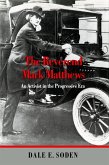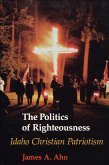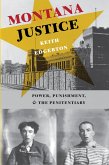More than a quarter-century has now passed since the United States set off the last of three underground atomic blasts in the remote wilderness of the Aleutian islands, off the coast of Alaska. Cannikin, as this third test was called, exploded as planned on November 6, 1971, on Amchitka Island. The first test, Project Long Shot (1965), was designed to determine whether the blast's shock waves could be distinguished from earthquakes. Milrow, the second (1969), and Cannikin were part of the U.S. anti-ballistic missile development program.
Amchitka and the Bomb looks at how these nuclear explosions were planned and conducted by the U.S. Department of Defense and the Atomic Energy Commission, in spite of vehement protests by political and civilian groups. In addition to demonstrating the feasibility of a new generation of weapons, the government defended the nuclear tests on Amchitka as providing U.S. presidents, and especially Richard Nixon, with negotiating power to force the Soviet Union to accept a satisfactory arms limitation agreement.
Dean Kohlhoff traces the enormous environmental impact of the blasts on the Aleutian wildlife refuge system. He also examines the social and political fallout from the tests on Aleut civilian populations. As the tests inexorably went forward, an emerging environmental movement was galvanized to action. Passionate but ultimately futile attempts to stop the blasts were made by such nascent groups as Greenpeace, Friends of the Earth, and the Wilderness Society. Although Alaskan Aleuts sued to halt Cannikin and environmental groups joined them for an injunction against the test, a split U.S. Supreme Court eventually approved the 5.1-megaton explosion.
Amchitka and the Bomb tells a harrowing story of the struggle of private citizens and small environmental groups to counter the weight of the federal government. It adds immeasurably to our understanding of the nuclear history of the United States. Its concise interweaving of the military, scientific, economic, and social implications surrounding the nuclear explosions on Amchitka Island exposes the unpleasant consequences of allowing treasured national values to become victim to political necessity. Kohlhoff has contributed a vital chapter to Alaska's history and to the history of the American environmental movement.
Amchitka and the Bomb looks at how these nuclear explosions were planned and conducted by the U.S. Department of Defense and the Atomic Energy Commission, in spite of vehement protests by political and civilian groups. In addition to demonstrating the feasibility of a new generation of weapons, the government defended the nuclear tests on Amchitka as providing U.S. presidents, and especially Richard Nixon, with negotiating power to force the Soviet Union to accept a satisfactory arms limitation agreement.
Dean Kohlhoff traces the enormous environmental impact of the blasts on the Aleutian wildlife refuge system. He also examines the social and political fallout from the tests on Aleut civilian populations. As the tests inexorably went forward, an emerging environmental movement was galvanized to action. Passionate but ultimately futile attempts to stop the blasts were made by such nascent groups as Greenpeace, Friends of the Earth, and the Wilderness Society. Although Alaskan Aleuts sued to halt Cannikin and environmental groups joined them for an injunction against the test, a split U.S. Supreme Court eventually approved the 5.1-megaton explosion.
Amchitka and the Bomb tells a harrowing story of the struggle of private citizens and small environmental groups to counter the weight of the federal government. It adds immeasurably to our understanding of the nuclear history of the United States. Its concise interweaving of the military, scientific, economic, and social implications surrounding the nuclear explosions on Amchitka Island exposes the unpleasant consequences of allowing treasured national values to become victim to political necessity. Kohlhoff has contributed a vital chapter to Alaska's history and to the history of the American environmental movement.
Dieser Download kann aus rechtlichen Gründen nur mit Rechnungsadresse in A, D ausgeliefert werden.









